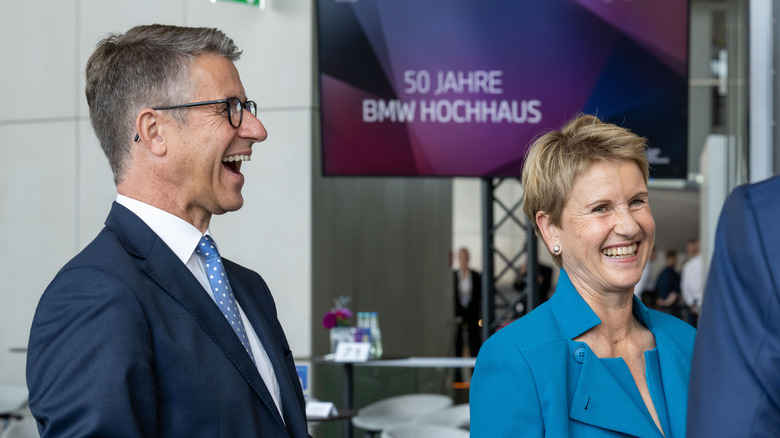Who Owns BMW And Where Are Its Cars Built?
BMW history starts in 1916 with Gustav Otto and Karl Rapp. Otto merged his aircraft manufacturing company into Bayerische Flugzeug-Werke AG (BFW) on March 7, 1916. One year later, in 1917, Rapp's airplane engine-building company became Bayerische Motoren Werke GmbH (BMW). The company dates its founding back to that 1916 date. The famous blue, white, and black BMW rotating-propeller emblem has graced the company's products since 1917.
BMW made its first cars in 1928. They were made under license from the U.K.'s Austin, but BMW soon designed its own cars, producing them from 1932. One year later, the National Socialists (also known as the Nazis) converted Germany into a war economy. The majority of BMW's production capacity would now be aircraft engines.
The post-war years saw car production resume in 1952 with the BMW 501, a six-cylinder luxury sedan that did not succeed in the marketplace. By 1959, BMW's situation was so precarious that Daimler-Benz offered to buy it, but BMW workers and small shareholders were opposed. BMW investor and former Nazi, Herbert Quandt, purchased additional shares, the German government provided financial assistance, and Quandt took over management of BMW. The Quandt family are heirs to the BMW fortune, with Herbert's son Stefan Quandt and daughter Suzanne Klatten themselves worth $38 billion as of 2022.
Where are BMW's cars built?
BMW has a large number of car-building factories located all over the world. In 2024, the BMW Group (which includes BMW, MINI, and Rolls-Royce) sold more than 2.45 million passenger vehicles, as well as 210,000 BMW motorcycles. This includes 10 plants in Germany, four in the U.K., two in Brazil, one in Hungary, one in Russia, one in South Africa, one in India, one in Thailand, one in China, one in Mexico, and one in the United States (located in Spartanburg, South Carolina).
BMW's U.S. plant in South Carolina covers eight million square feet and employs 11,000 people. It currently builds the BMW X3, X4, X5, X6, X7, and XM SUVs (known as Sports Activity Vehicles in BMW-ese) and also the Coupe versions, using some imported parts. The factory produces more than 1,500 vehicles per day, of which 60% are shipped to 120 different markets all around the world. Since it started up back in 1994, it has seen six expansions and has built more than 6.5 million vehicles. The latest expansion is the seventh and will prepare Spartanburg for electric vehicle production. It also involves the building of a battery plant in Woodruff, South Carolina, at a total cost of $1.7 billion. Tours of the Spartanburg plant are available and take one-and-a-half hours.

